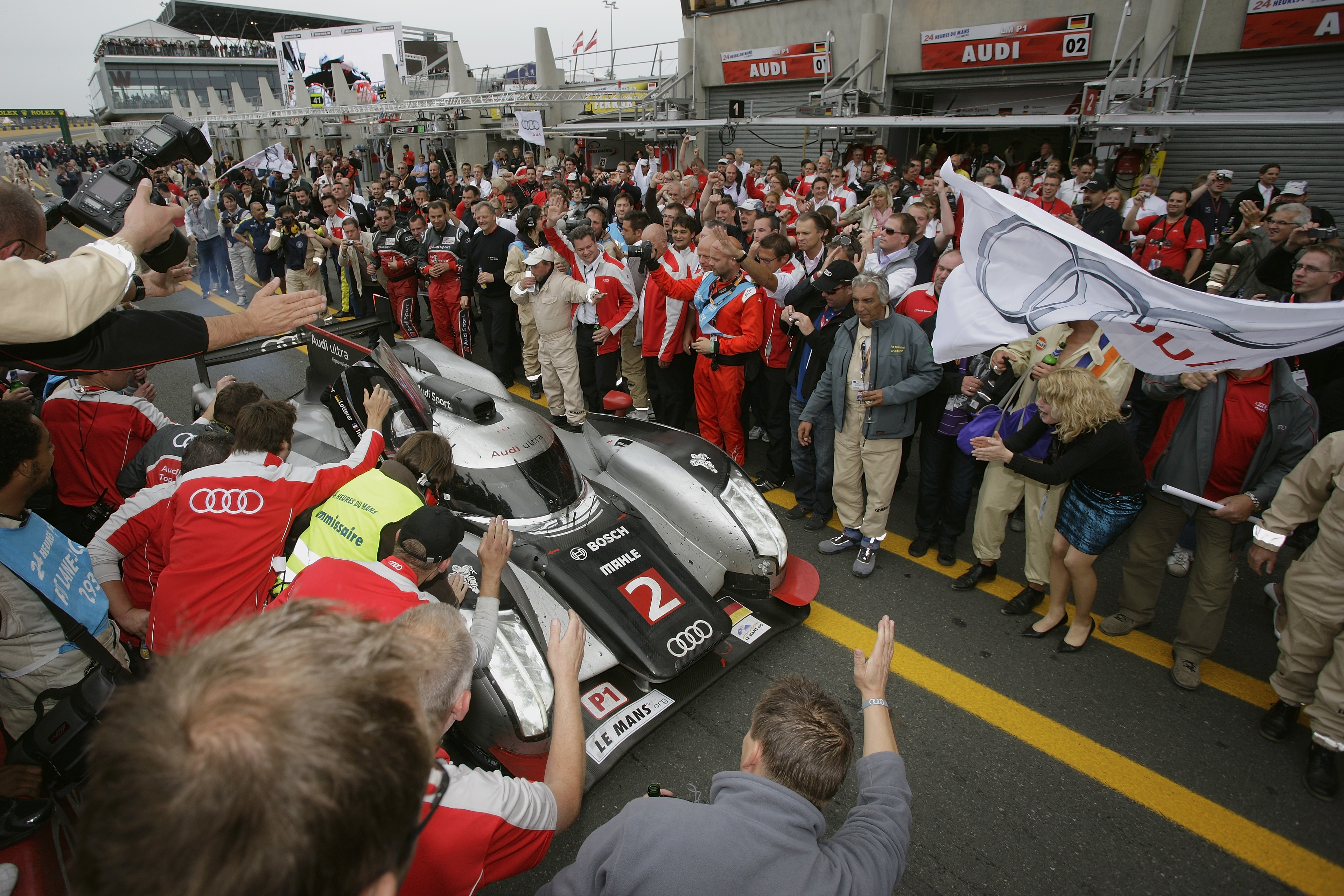Feature: 2011 24 Heures du Mans
Diesel Sports Car Wars
Germany’s Audi and France’s Peugeot continued their battle at La Sarthe
By John LeBlanc
LE MANS, France – Future historians will agree: Audi started the 21st-century diesel sports car war. The ambitious Teutonic automaker fired the first salvo by entering its audacious diesel (yes, diesel!) powered sports car in the legendary 24 Hours of Le Mans endurance race five years ago. And, despite diesel’s image of tortoise-like performance, the R10 TDI (Turbo Diesel Injection) LMP racer, with its distinctively muffled exhaust noise, went on to win the legendary race on its first outing in 2006.
Knowing the car business as it is, Audi’s big win would not be left unchallenged for long. The very next year, French automaker Peugeot fired back by entering its own diesel-power sports car, the 908 HDi FAP. The war was officially on.
Over the next five years, the two European automakers would battle here in June for diesel sports car supremacy. On the famous 13.6-km long Circuit de la Sarthe at speeds up to 300 km/h, heading into the 2011 race, Audi clearly had the leg up on its French rival, winning four races on diesel power to Peugeot’s lone win in 2009. That marked its first win at Le Mans since 1993.
And while luck wasn’t on Peugeot’s side last year, the French had their hopes up for this year’s running. Peugeot’s 908 underwent extensive reworking, which saw it sweep three races in the new Intercontinental Le Mans Cup series during 2010. And where experience and reliability play key roles in a marathon like Le Mans, Audi was bringing its unproven all-new R18 TDI, which by all accounts was plenty fast, but like the first 908s, not so reliable. Indeed, this year’s battle was to be pretty epic.
Seemingly, the smart money was on the French. But it wasn’t going to be a walk in the park. Qualifying saw only a half-second difference between the Audi and Peugeot juggernauts; two Audis filled the first row, with two Peugeots the second row. The third row was split between the two marques.
Optimistic racers leave the Le Mans starting gird with thoughts of crossing the finish line 24 hours later. But those hopes were dashed early for two-thirds of the Audi entrants only eight hours in.
Longtime Audi racer, Allan McNish, in R18 TDI No.3, was in the lead before the end of the first hour when the No.58 Ferrari of Anthony Beltoise hit his left rear wheel in the “La Chappelle” section of the track, near the famous Dunlop bridge. McNish spun off the track, hit the track barrier and rolled over in a spectacular explosion of carbon-fibre bodywork.
Watching the replay of McNish’s crash in the media lounge, my first thought was he – or perhaps some of the marshals or photographers who were dodging flying bits of R18 – had to have been badly hurt. Yet, the racer’s one-piece carbon-fibre tub withstood the impact. McNish climbed out of the wreckage uninjured, and none of the nearby witnesses were hurt.
Then, shortly before 11 p.m. in the dark, the 2011 battle of the diesel sports cars suddenly became three Peugeots against one Audi.
Mike Rockenfeller, driving the No.1 R18 TDI, made contact with a Ferrari while running near top speed. Rockenfeller’s car veered left and, at 270 km/h, hit a guardrail at the entrance to the Indianapolis curve. Once again, the new Audi-developed carbon-fibre monocoque withstood the impact. Like McNish, last year’s winner was able to climb out of the wreckage on his own steam.
With two cars down, the responsibility of keeping the healthy trio of Peugeots at bay was up to Switzerland’s Marcel Fässler, Germany’s André Lotterer and France’s Benoît Tréluyer in their No.2 R18. Or be taken out by yet another Ferrari. Once again, betting on the Peugeots to walk way with this year’s race looked like a sure thing.






![[del.icio.us]](https://www.straight-six.com/wp-content/plugins/bookmarkify/delicious.png)
![[Digg]](https://www.straight-six.com/wp-content/plugins/bookmarkify/digg.png)
![[Facebook]](https://www.straight-six.com/wp-content/plugins/bookmarkify/facebook.png)
![[Google]](https://www.straight-six.com/wp-content/plugins/bookmarkify/google.png)
![[Reddit]](https://www.straight-six.com/wp-content/plugins/bookmarkify/reddit.png)
![[StumbleUpon]](https://www.straight-six.com/wp-content/plugins/bookmarkify/stumbleupon.png)
![[Twitter]](https://www.straight-six.com/wp-content/plugins/bookmarkify/twitter.png)
![[Email]](https://www.straight-six.com/wp-content/plugins/bookmarkify/email.png)